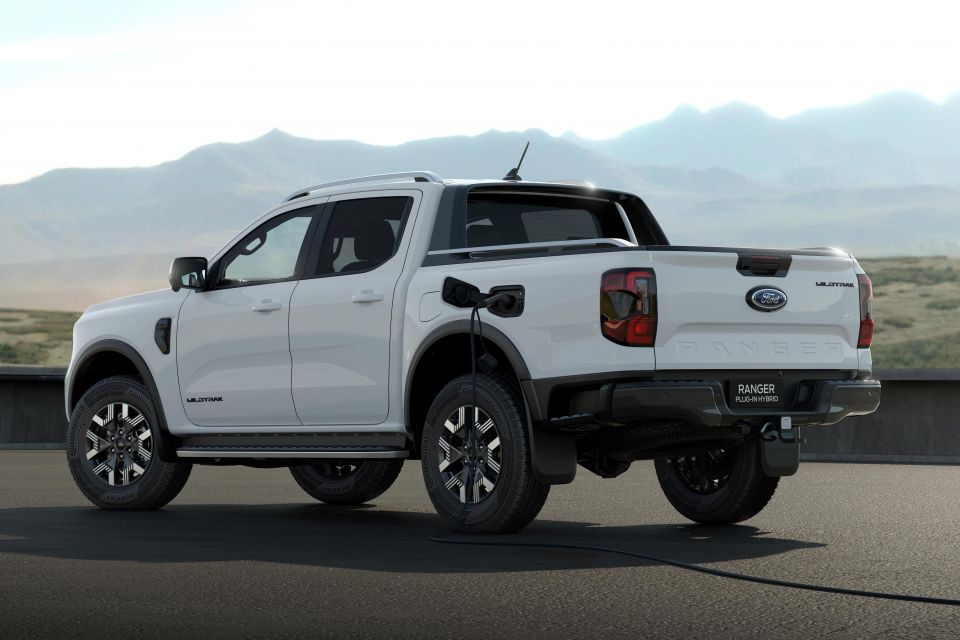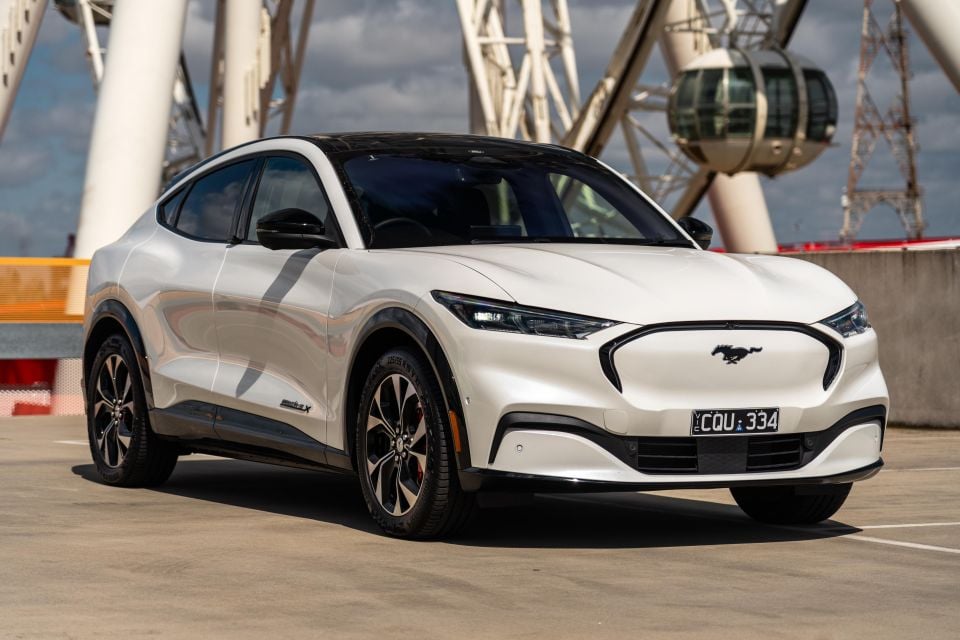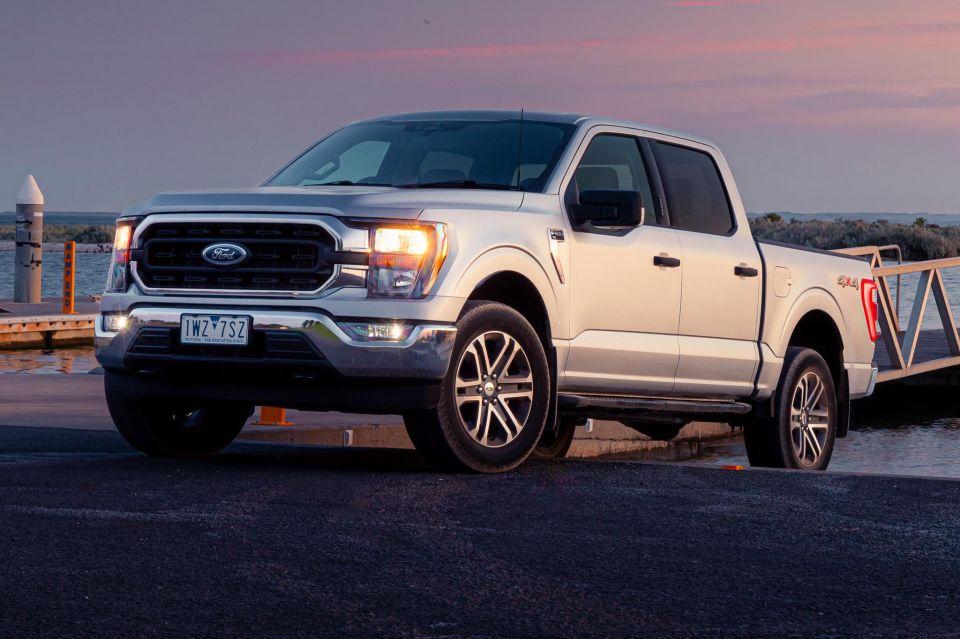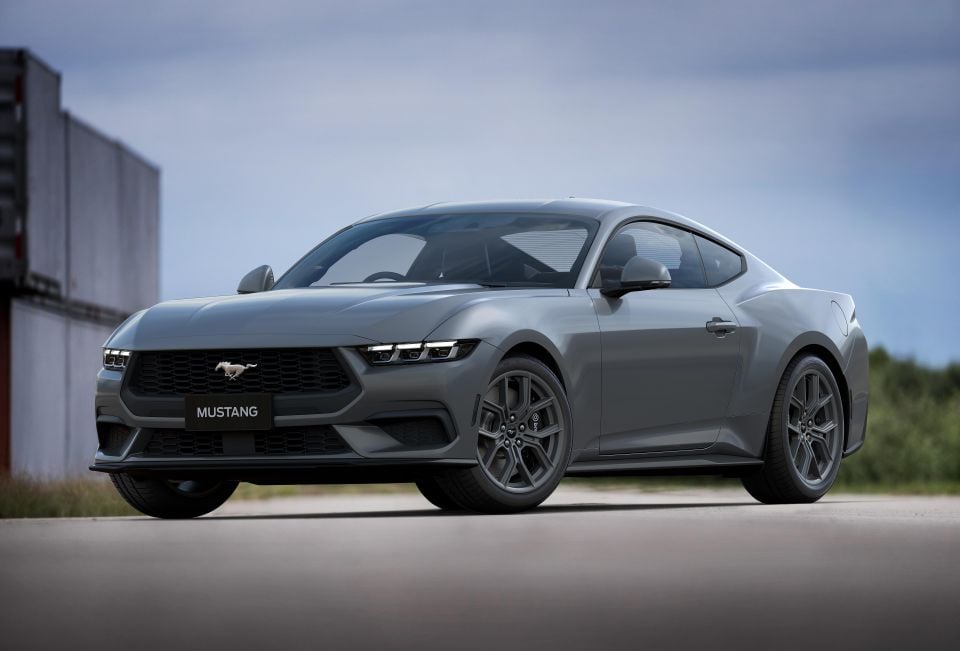

Matt Campbell
2026 Hyundai Tucson Hybrid review
6 Hours Ago

Senior Journalist
Ford Australia is convinced that incentives, and not financial penalties, are the key to the potential success of Australia’s upcoming New Vehicle Efficiency Standard (NVES).
Instead of just threatening hefty penalties that may drive up the price of new cars from next year, it wants the Federal Government to provide a carrot as well as a stick to car companies.
It wants any penalties under the NVES to be delayed until 2026, with ’super credit’ offsets to boost the incentive for battery-electric and plug-in hybrid vehicles, and for Canberra to create a longer glide path that includes provision for future models including more-efficient utes.
Ford is convinced the government’s plan is too much and too soon for carmakers with long lead times, despite its existing battery-electric models and plans for electrification that include a plug-in hybrid model in the Ford Ranger lineup.

“There will be cost impacts of the policy,” a Ford spokesperson told CarExpert.
“Where those costs sit is a question that we will work through as details of the final scheme are confirmed. Many factors go into pricing, but this is certainly an important one that will need to be considered.”
Under the NVES, carmakers will be given targets for average CO2 emissions per kilometre across their vehicle fleets. Over time this CO2 target will move, forcing companies to provide vehicles with lower or zero emissions to meet stricter targets.
If companies meet or beat their CO2 target, they’ll receive credits. If they miss it, they can either trade credits with a different supplier, make it up over a set period, or pay a penalty.

Ford isn’t arguing against the greening of Australia’s vehicle fleet but is sounding a warning about the timing and severity of the NVES in its response to the proposal from Canberra.
“There are real challenges that as an industry and society we should address. The successful decarbonisation of our transport system requires vehicle technology to be fit-for-purpose, the provision of reliable and accessible infrastructure, and for customers to be informed and ready,” said the president and CEO of Ford Australia, Andrew Birkic.
“It’s important to recognise that some parts of this journey are easier than others. Right now, as we look to the mainstream take-up of electrified vehicles, there are many people for whom an EV exists and is perfect for their needs.
“Outside these groups, there are real challenges that as an industry and society we should address.”

Ford, like other major manufacturers including Toyota, believes there is no one-size-fits-all solution to electrification of the Australian vehicle fleet.
“It’s clear to everyone at Ford that EVs and software-defined vehicles are a large part of our future. What’s also true is that electrification won’t happen in a straight line,” Ford Australia said in a statement.
“While we are focused on bringing a range of EVs to the market, we realise they aren’t yet for everyone — remote communities, emergency services, farmers and trades being perfect examples of those who rely on internal combustion vehicles.”
One of the key proposals in Ford Australia’s response to the Federal Government’s NVES plan is an amendment focussed on incentives for electrified vehicles and off-cycle technology.
Multiple companies have called for off-cycle credits, which would take into account features that may reduce a vehicle’s emissions in a way not measured in emissions testing.

“Our strong recommendation is to include a super credit system that allows all BEV (battery electric vehicles) and PHEV (Plug-in hybrid electric vehicles) light-commercial vehicles and passenger vehicles to be to be counted as three and two vehicles respectively,” said Ford Australia in a statement.
“This will give impetus to deploying the best technologies and achieve real world CO2 reductions in the absence of consumer purchasing incentives.”
Ford Australia’s response to the government’s NVES plan has five key components.
It wants a seven-year glide path to full implementation of the scheme; incentives including the ’super credits’; vehicle segmentation to exclude vehicles with a gross vehicle mass over 3500 kilograms; and a delayed start to any CO2 penalties.
It’s also calling for changes to ‘break points’, which align CO2 targets to particular vehicle weight thresholds, to prevent users in trades, agriculture, infrastructure and forestry from being negatively impacted.
It’s asking for the Government to remove these, or set the upper break points for both passenger and commercial vehicles at 2500kg. These are set at 2000kg and 2200kg, respectively, in the Government’s preferred Option B.

“It is our recommendation that penalties be applied only from 2026 at the earliest. Further, penalties should commence at $50 per g/km and grow annually over the scheme to a maximum of $100 per g/km,” Ford said.
The penalty of $100 per g/km is what the Government is calling for in Option B, but it wants this to come into effect from January 1, 2025.
Ford believes its proposed changes to the Government plan are realistic and workable.
“These would enable vehicle manufacturers to bring more zero and low emissions vehicles to Australia while ensuring Australian consumers can continue to access a range of vehicles capable of meeting their needs,” said Ford Australia.
MORE: Toyota’s wish list for new Australian emissions regulations MORE: Volkswagen quits lobby group committee, reiterates support for emissions regulations MORE: Isuzu sounds alarm on new government emissions regulations MORE: Nissan backs new emissions laws but calls for incentives, regulatory reform MORE: GMSV backs emissions rules as new electric cars arrive to offset V8s MORE: Mitsubishi: Emissions standards can’t forget about ‘middle Australia’ MORE: Carmakers, lobby groups go to war over cost of emissions standards to new car buyers MORE: Climate lobby backs Australian emissions standards, but data leaves more questions than answers MORE: Hyundai backs tough emissions standard for Australian new cars MORE: Mazda pumps the brakes on Australian efficiency standards, calls for subsidies MORE: Car industry cautious about Australia’s proposed vehicle efficiency standards
Where expert car reviews meet expert car buying – CarExpert gives you trusted advice, personalised service and real savings on your next new car.
Paul Gover is one of the most experienced and respected motoring journalists in Australia. After more than 40 years on the automotive beat there is nothing he has not done, yet he still brings the enthusiasm of a rookie. He has worked in print, digital, radio, television and for every major publisher in the country. He is also a national motor racing champion and once co-drove with Peter Brock at Bathurst.


Matt Campbell
6 Hours Ago


Max Davies
22 Hours Ago


William Stopford
22 Hours Ago


Derek Fung
23 Hours Ago


Max Davies
1 Day Ago


William Stopford
2 Days Ago